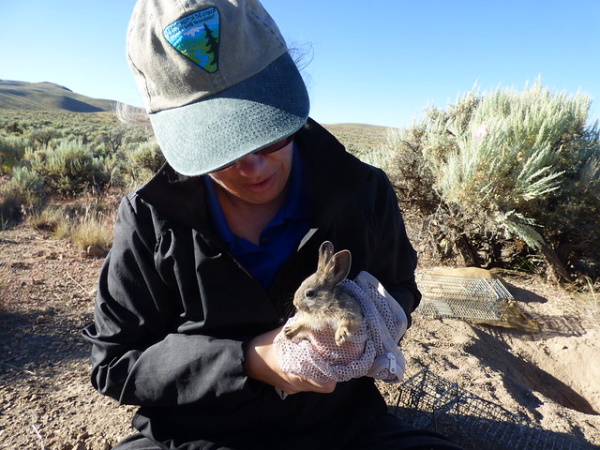Eastern Cottontail
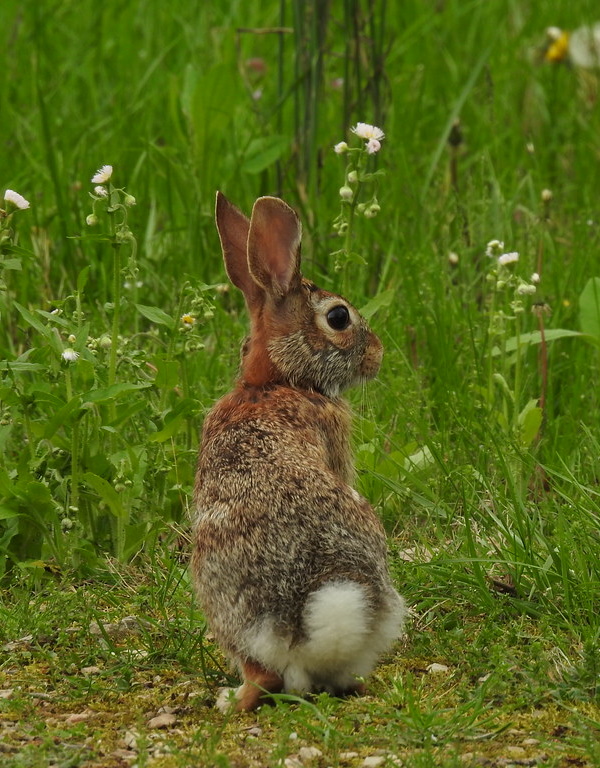
The Eastern Cottontail (Sylvilagus floridanus) is the most familiar of the 13 recognized species within the genus Sylvilagus. Commonly found from the southern reaches of eastern Canada down through the eastern half of the United States and as far south as Venezuela in South America, Eastern Cottontails are extremely fertile creatures – true rabbits indeed! – and the average female can produce in the neighborhood of 35 offspring annually.
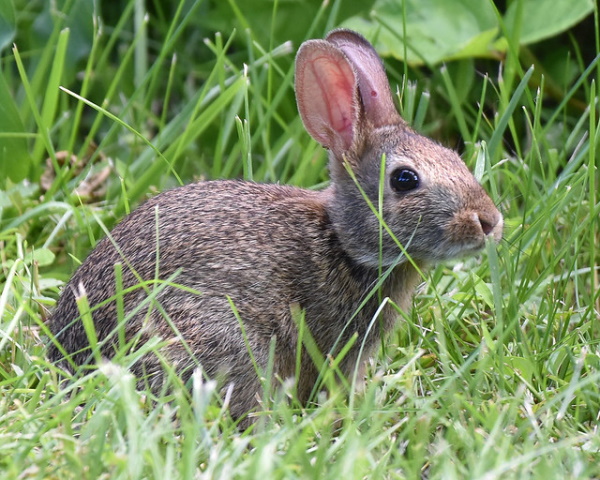
Eastern Cottontails’ legendary fecundity serves them well as they are the favored prey of a large number of predators including foxes, badgers, raccoons and owls. Eastern Cottontails reach reproductive age after only 2 to 3 months and although they can live up to 5 years in captivity, their lifespans rarely exceed 15 months in the wild. (images via Raincrow and Laura Wolf)
Volcano Rabbit
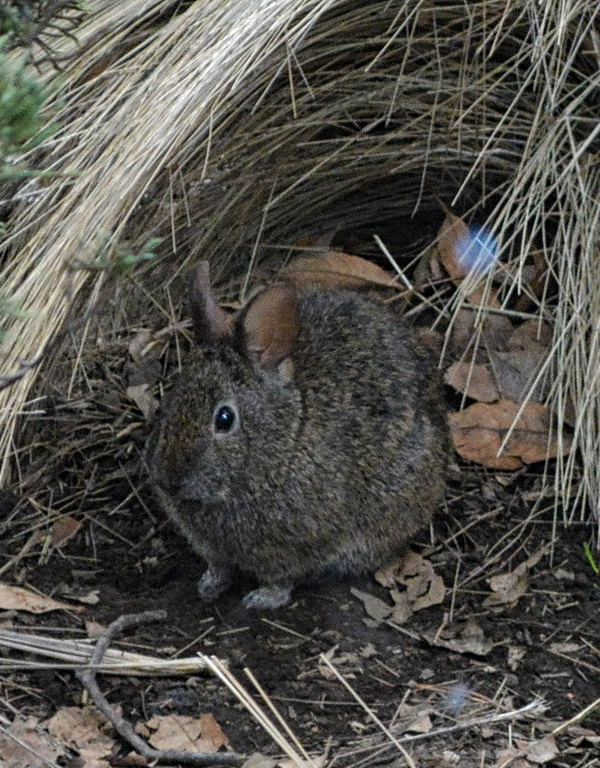
The Volcano rabbit (Romerolagus diazi) is known as the Teporingo or Zacatuche in its home range on the slopes of Mexico’s volcanoes. Dark-furred, small-eared and herbivorous, Volcano rabbits are nocturnal creatures who communicate with one another through the utterance of high-pitched squeaks and chirps. Rarely exceeding one pound in weight, Volcano rabbits are one of the world’s smallest rabbits.
Like many of Mexico’s indigenous endangered species, Volcano rabbits are under pressure by human expansion into their prime habitats. They are also victimized by hunters who do not eat the rabbits, but merely use them for target practice when hunting birds. The IUCN Red List of Threatened Species lists Volcano rabbits as “EN”, or Endangered, and there may only be about 1,000 or so currently living in the wild. (cropped image via ProtoplasmaKid – Wikimedia)
European Rabbit
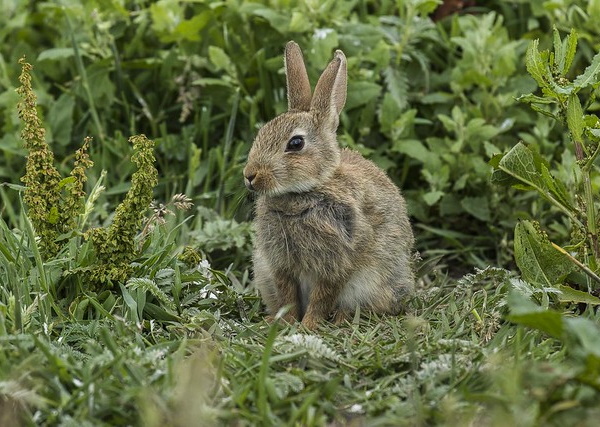
The European rabbit (Oryctolagus cuniculus) is originally native to western France, the Iberian peninsula and coastal western North Africa. Also known as “common rabbits” and familiar to readers of traditional children’s stories, European Rabbits range from 1.1 to 2.5 kg (2.4 to 5.5 lb) in weight and are avid burrowers. European rabbits are one of the world’s first human-aided invasive species. At various times in the past they have been introduced to the United Kingdom (by the Romans), central Europe, parts of Chile, the Falkland Islands, New Zealand and Australia.
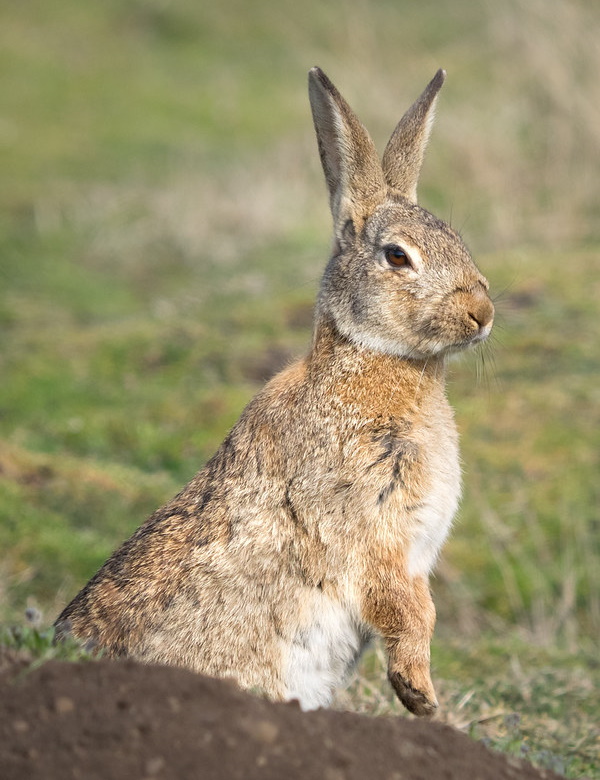
In almost every case, the introduction of the “cute bunnies” has led to environmental imbalances that have been at times devastating, especially and most famously in Australia. In 1859, a misguided estate owner imported 24 European rabbits to Victoria, Australia, where they soon escaped and bred out of control. Natural pest control via the introduction of the deadly Myxomatosis virus in 1950 was effective in the short term but it wasn’t long before the rabbits developed immunity to the disease. (images via Francesco Veronesi and Ingrid Taylar)
Sumatran Striped Rabbit
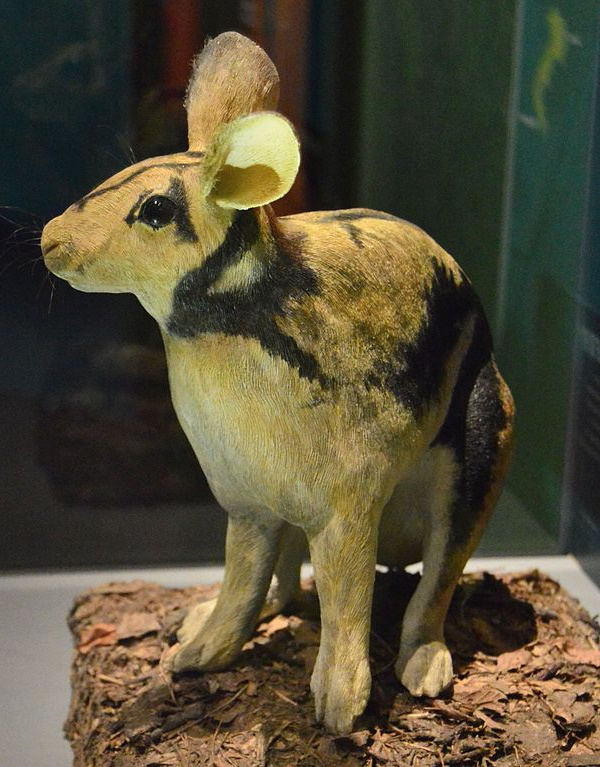
The Sumatran striped rabbit (Nesolagus netscheri) is so rare it makes the critically endangered Bushman rabbit seem positively abundant. After being sighted in the 1930s, the rabbit was not seen again until 1972 and, via camera trap, several times since 2000. Though threatened by human encroachment on its habitat, the Sumatran Striped Rabbit is rated only “VU” or Vulnerable on the IUCN Red List of Threatened Species, as wild populations are considered to be relatively stable in their small but rugged rainforest range.
Once thought to be the only member of the genus Nesolagus, the Sumatran striped rabbit has lately been joined taxonomically by the Annamite Striped Rabbit (Nesolagus timminsi). The foot-long Annamite striped rabbit is native to the Annamite Mountains between Laos and Vietnam. Both rabbits have striped coats, short ears like the Amami rabbit, and live in isolated, mountainous jungle habitats. (image via Bongopete – Wikimedia)
Do you prefer non-human hairstyles to animal hare styles? Check out Perm Whales: 7 Amazing Unexpected Curly-Haired Animals!

